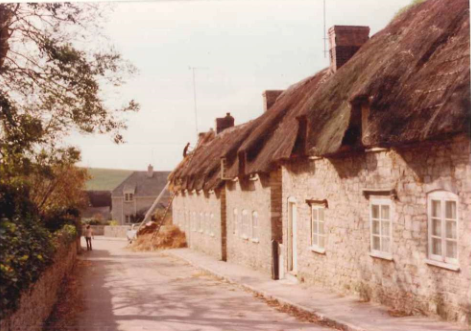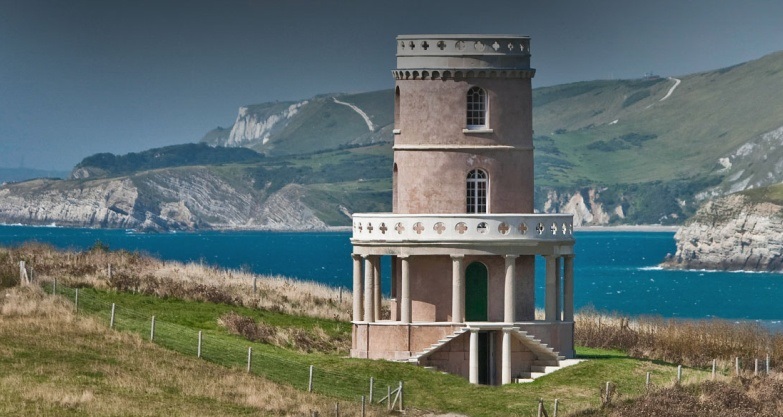Kimmeridge is a small parish of about 1,000 acres and 100 inhabitants lying six miles south of the Market town of Wareham. The village comprises stone-walled cottages, mostly with thatched roofs, a cafe and a church. It is mainly inhabited by families which have lived and worked there for several generations. The surrounding farmland supports dairy herds, sheep flocks and some arable cropping – and during the Second World War a considerable number of troops preparing for D-Day!
Kimmeridge Bay is well known for its geology and fossils and has its own “nodding donkey” pumping shale oil up from a deep borehole. It is overlooked by Clavells Tower, thought to be used for signalling to smuggler’s boats out of sight of land. There is a history of industry and intrigue surrounding Kimmeridge Bay.
At the time of the Norman Conquest the two main landowners were Cerne Abbey and the Smedmore family. In 1391 Henry Smedmore sold his land to the Wyot family which began the Clavell family into which the Mansels married in 1830. John Clavell of Smedmore purchased the Cerne Abbey landholding including the village of Kimmeridge after the Dissolution of the monasteries in 1539. The same family continue to own and manage that land, now known as the Smedmore Estate, and most of the houses in the village.


